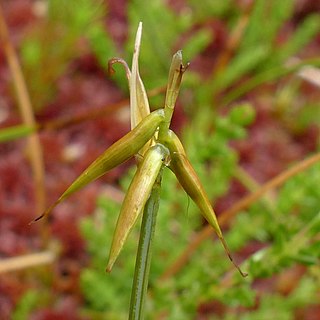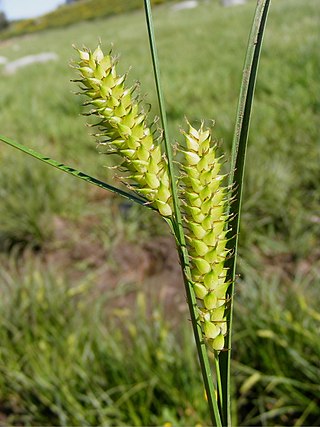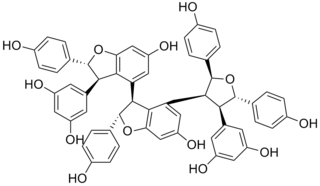
Carex is a vast genus of over 2,000 species of grass-like plants in the family Cyperaceae, commonly known as sedges. Other members of the family Cyperaceae are also called sedges, however those of genus Carex may be called true sedges, and it is the most species-rich genus in the family. The study of Carex is known as caricology.

The Donaciinae are a subfamily of the leaf beetles, or Chrysomelidae, characterised by distinctly long antennae. They are found in mainly the Northern Hemisphere, with some species found in the Southern Hemisphere.

Carex pauciflora, the few-flowered sedge, is a perennial species of sedge in the family Cyperaceae native to bogs and fens in cool temperate, subarctic, and mountainous regions of the Northern Hemisphere. The specific epithet pauciflora refers to the Latin term for 'few flowered'.

Carex vesicaria is an essentially Holarctic species of sedge known as bladder sedge, inflated sedge, and blister sedge. It has been used to insulate footwear in Norway and among the Sami people, and for basketry in North America.

Kobophenol A is a stilbenoid. It is a tetramer of resveratrol. It can be isolated from Caragana chamlagu, from Caragana sinica and from Carex folliculata seeds.

Carex tumulicola, the splitawn sedgefoothill sedge, or previously Berkeley sedge, is a sedge member of the family Cyperaceae.

Carex spicata is a species of sedge in the genus Carex.

Donacia dentata is a species of leaf beetles of the subfamily Donaciinae.

Carex aboriginum is a species of sedge endemic to Idaho in the western United States, known as Indian Valley sedge. It was not observed in the wild between 1910, when it was first described, and 1999. Until its rediscovery, C. aboriginum was considered the only plant native to Idaho to have become extinct, and it remains one of the state's rarest and most endangered plant species.

Carex subg. Vignea is a subgenus of the sedge genus Carex, containing around 300 of the 2000 species in the genus. Its members are characterised by having bisexual, sessile spikes, where the female flowers have two stigmas each.

Carex angustisquama is a tussock-forming species of perennial sedge in the family Cyperaceae. It is native to northern parts of Honshu in Japan.
Carex bodinieri is a tussock-forming species of perennial sedge in the family Cyperaceae. It is native to Japan and eastern parts of China.
Carex capilliformis is a tussock-forming species of perennial sedge in the family Cyperaceae. It is native to central parts of China.
Carex cylindrostachys is a tussock-forming species of perennial sedge in the family Cyperaceae. It is native to parts of Yunnan and Sichuan in China. Its common name in Chinese is zhu sui tai cao, or 柱穗薹草.
Carex delavayi is a tussock-forming species of perennial sedge in the family Cyperaceae. It is native to parts of south central China.

Carex dissitiflora is a tussock-forming species of perennial sedge in the family Cyperaceae. It is native to parts of Japan and Taiwan.

Carex makinoensis, also known as tufted rock-living sedge' is a tussock-forming species of perennial sedge in the family Cyperaceae. It is native to parts of South Korea, Taiwan and Japan.

Carex mitrata, also known as mitra sedge is a tussock-forming species of perennial sedge in the family Cyperaceae. It is native to Japan, Korea, Taiwan and eastern parts of China.

Carex shimidzensis is a tussock-forming species of perennial sedge in the family Cyperaceae. It is native to parts of Japan, Korea and the Kuril Islands.














